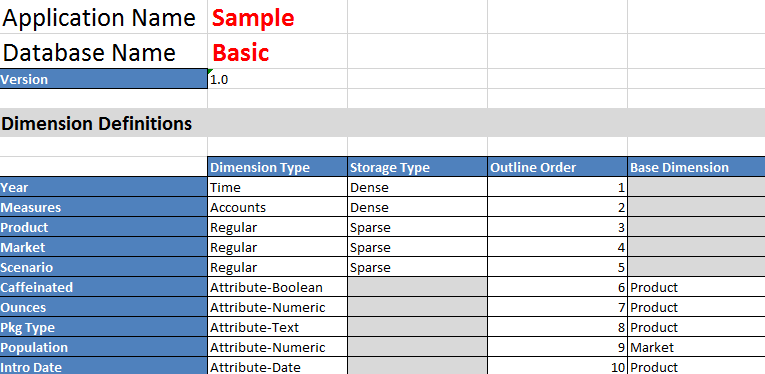Understand the Essbase.Cube Worksheet
The Essbase.Cube worksheet defines the application and cube name and dimension information, such as dimension names, types, storage (dense or sparse) and outline order.
The following image shows the Essbase.Cube worksheet in a sample application workbook.

Table A-1 Essbase.Cube Worksheet Fields and Values
| Property or Field | Valid Values | Description |
|---|---|---|
| Application Name |
|
Enter the name of the application. |
| Database Name |
|
Enter the name of the cube. |
| Version |
This must be a positive integer. |
This is the application workbook version. |
| Dimension Name |
Dimension names cannot be the same as the cube name. |
Enter the name of each dimension. There must be at least two dimensions in a cube. For block storage, one dimension must be a dense dimension. Use no more than 1024 characters when naming dimensions, members, or aliases. The following special characters are not allowed: @, ., ,, !, {, }, [, ]. /, \, *. |
| Dimension Type |
|
Describes the type of dimension. Regular is the Default. Per cube, you can only use one Time and one Accounts dimension type. |
| Dimension Storage |
|
Sparse is the default. There must be at least one dense dimension. |
| Outline Order |
This must be a positive integer. |
This is the order of the dimension in the outline. Attribute dimensions must be ordered after base dimensions. |
| Base Dimension |
This must be an existing dimension name. |
This is the dimension pairing for the attribute dimension. |
You can modify the Essbase.Cube worksheet in the Designer Panel. See Work with the Essbase.Cube Worksheet in Cube Designer.